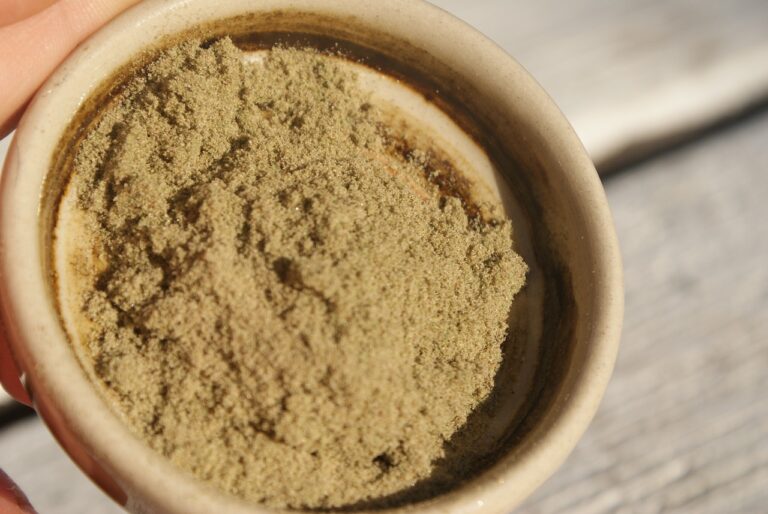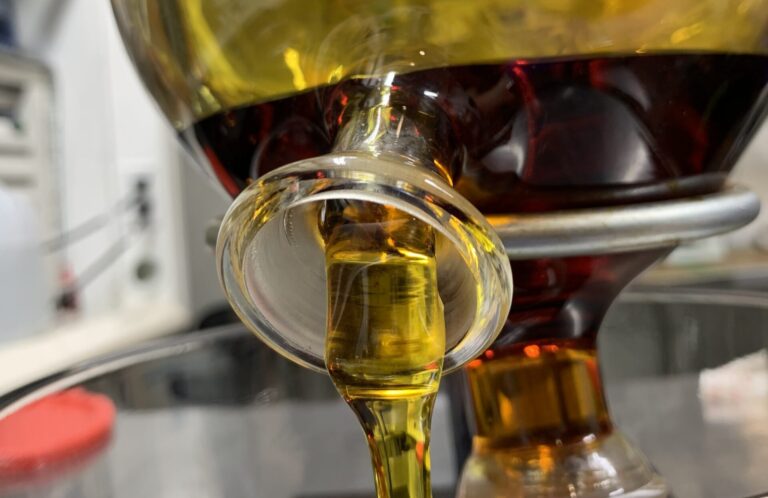Cannabis concentrates may be considered the epitome of the intersection between cannabis and science. Concentrates have significantly shaped both historical and modern cannabis culture, from the ancient traditions of hash-making to molecular distillation in the modern age.
Today, concentrates offer a diverse array of options, from the texture and potency to the method of consumption. Understanding their evolution provides insight into both the scientific advancements in cannabis processing and the changing social attitudes towards the plant.
The Original Cannabis Concentrate
Hashish, or hash, stands as one of the earliest forms of cannabis concentrates, believed to have originated in the ancient Middle East and Central Asia. Traditional methods of making hash involved dry-sifting cannabis flowers or hand-rubbing to collect resinous trichomes, forming a potent concentrate known for its rich aroma and strong effects.
This ancient concentrate was not only a recreational substance but also played a significant role in cultural and religious practices. It was especially prevalent in regions where cannabis was indigenous, serving both medicinal and ceremonial purposes.
To this day, creating hash remains a large part of Middle Eastern and Asian cultures.

Western Introduction and Innovations
Hash reached Western societies more broadly in the 19th century, but it surged in popularity during the 1960s and 1970s with the rise of the counterculture movement. This period sparked a wave of innovation in its production, as Western users and scientists began exploring more sophisticated extraction methods.
These advancements led to the innovation of the hash-making process, resulting in the creation of pressed hash, which combines heat and pressure to form a solid block as opposed to hand rolled balls. These methods enhanced both the purity and potency of the products, catering to a growing demand for stronger and more versatile cannabis formats.
The Rise of BHO and The Dab
The introduction of butane hash oil (BHO) in the early 2000s marked a significant leap in concentrate production. Utilizing butane as a solvent, this method extracts a wide range of cannabinoids and terpenes, this process made it possible to completely separate cannabis compounds from the plant material to create the purest cannabis concentrates at the time.
With different heat applications, solvent ratios, andmixing processes, producers could achieve unique consistencies such as batters, waxes and brittle concentrates called shatter.
These forms became popular for their intense potency and distinct flavors. As smoking accessories evolved to meet the needs to concentrates consumers, “dabs” and “dabbing” became a staple of cannabis culture.
However, the use of butane raised significant safety concerns, prompting debates over the health implications of solvent residues and the risks of explosions during extraction. This led to stricter regulations and a push for safer production practices within the burgeoning cannabis industry.
Advancements in Solventless Concentrates
In response to the concerns associated with solvent-based extractions, the cannabis industry saw a resurgence in solventless techniques. Taking the traditional methods of hash making and flipping it on its head, rosin was created. Also called “Live Rosin”, this cannabis concentrate is produced by applying high pressure to cannabis flowers or kief using heated plates.
This method does not require any sort of solvent, thereby eliminating the risk of solvent contamination. Using just heat, pressure, and cannabis flower, rosin is currently considered the most natural modern cannabis extract at this time.
Live rosin gets its name by using freshly harvested, uncured plants, which are frozen to preserve all terpenes and cannabinoids. Within days, or even hours of harvesting and freezing the flowers they are either pressed directly into rosin, or they are washed with ice water to separate and collect the trichomes. The collected trichomes are often called bubble hash due to the bubbles that form during the washing process, and can then either be consumed as its own form of hash or can be further pressed into live rosin. The quality, consistency, and overall yield of the live rosin can be greatly impacted by whether it is created using flower material or bubble hash.
In both cases, the result is a highly aromatic and flavorful concentrate that maintains the full spectrum of the plant’s properties, appealing to consumers seeking a pure and potent cannabis experience.
The Modern Era: Distillates and Isolates

While rosin development was still in its early stages, scientists were hard at work using technology to create other new, pure forms of cannabis extracts. Distillates and isolates represent the cutting edge of concentrate technology, offering unparalleled purity and potency. Through distillation, specific cannabinoids like THC and CBD are isolated and refined to produce highly pure extracts.
Distillation allows the purification of cannabinoids. This gives producers the ability to customize their concentrates with unique terpene profiles, add in specific cannabinoids to provide a certain experience, and most of all, maximize potency.
Isolates take this a step further by stripping away all other cannabinoids and terpenes to achieve over 99% purity of a single cannabinoid. This format is ideal for consumers looking for specific therapeutic effects or manufacturers aiming to create standardized and precise dosing in their products.
Distillates and isolates are commonly used in cannabis edibles due to their flavorless profiles and high potencies, allowing small amounts of them to be mixed with a variety of confectionaries like brownies, gummies and more without impacting the overall flavor.
The Future of Cannabis Concentrates
As the legal landscape around cannabis continues to evolve, so too does the technology for producing concentrates. Anticipated future trends include advancements in extraction techniques that could yield even more efficient and safer productions. Furthermore, as legalization spreads, more extensive research could lead to better understanding and utilization of the various cannabinoids and terpenes.
With more people trying cannabis today than ever before, there is a growing need for diverse products that utilize cannabis concentrates to provide specific effects, whether it is micro-dosed tablets, or high-dose medicinal products. This demand from consumers will further drive innovation in the industry.
The evolution of cannabis concentrates from traditional hash to modern distillates and isolates illustrates significant advancements in both technology and understanding of cannabis. These developments reflect broader cultural shifts towards accepting and integrating cannabis into medical and recreational realms.
As research continues and technology advances, the future of cannabis concentrates promises further innovations that will continue to shape the industry and consumer experiences.

